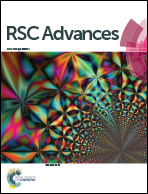An ultrasensitive sandwich-type electrochemical immunosensor based on functionalized mesoporous carbon for IgG detection
Abstract
Immunoglobulin (IgG) plays an important role in the accurate diagnosis of some diseases. Conventional clinical detection is expensive and has low sensitivity. To overcome these disadvantages, in this study, a novel and ultrasensitive electrochemical immunosensor based on functionalized ordered mesoporous carbons (OMC) was developed. To this purpose, the mesoporous carbon was functionalized with 3-aminopropyl triethoxysilane to stabilize gold nanoparticles (Au NPs) for the efficient adsorption of chromium ions (Cr3+) and secondary antibodies (Ab2). The prepared immunoassay is better than conventional label-free electrochemical immunoassays due to the synergetic effect provided by the Cr3+@Au@OMC. The prepared nanocomposites (Cr3+@Au@OMC) functioned as a signal magnification label, as it has superior electrocatalytic activity for hydrogen peroxide reduction. Meanwhile, Au NPs were electrodeposited on the electrode surface to increase the amount of primary antibodies (Ab1) being absorbed. Under the optimal conditions, a linear range was identified from 0.01 pg mL−1to 100 ng mL−1 with a detection limit of 3.33 pg mL−1, comparing favorably with the conventional limit of 3 ng mL−1. Thus, the developed immunosensor has great potential in clinical and diagnostic applications due to its high sensitivity, good selectivity and stability for the quantitative detection of IgG.


 Please wait while we load your content...
Please wait while we load your content...